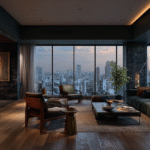Office managers have known for several decades how office design and layout affect the output of staff. This knowledge is what saw the evolution of office space from boring, drab cubicles – which were the norm in the 1980s – to more vibrant and open style offices. The collaborative office space revolution happened soon after, as productivity in the workplace soared in companies that were early adapters.
Here we saw a complete tear down of walls and dividers between staff; symbolic of the removal of mental blockages or barriers restraining employees from working together in synergy. Creating a more welcoming environment not only made it easier for staff to collaborate, it also generated more ideas, encouraged better co-operation between team members, and spurred increased creativity.
Some employees took things to the extreme, such as Google, with their “only come in to work if you want to” policy, which was at one point implemented a few days a week at the world’s largest tech firm. Such a policy could only work however, at a workplace where the employees actually love doing the work they do, so this would clearly not work for every company.
Increasing Employees Happiness

A good employer is always trying to assist his staff in boosting their job satisfaction, happiness in the workplace, and consequently, their output. It’s a win-win situation for the business and for the staff, so it makes sense as a manager to spend time working on this complex and sometimes elusive equation. “How can I make my staff happier?” and, “How do I maintain staff happiness?” are two questions every manager should be asking themselves – and reassessing – on a regular basis.
Collaborative offices, with open spaces, few or no walls between employees, and more modern, colorful, and creativity-inspiring interior designs change the vibe of an office from a restrictive and unwelcoming place into more of a comfortable and peaceful place of co-operation and collaboration. This in turn fosters a feeling of openness, and relaxation, which can be a boon for employees; fostering new friendships, an increase in workplace enjoyment, attitude towards spending time at the office, and ultimately, increasing the overall happiness of staff.
Aesthetics and the Effect on our Psyche

“Beauty is in the eye of the beholder,” but studies show that similar things appeal to the majority of people. Certain designs, artwork, colors and patterns all rated highly on tests about how visually appealing they are.
There’s no set standard for what looks good, but people have a tendency to appreciate the design of particular things more than others. Choosing an interior design that staff will like, fell comfortable in, and that fosters creativity is paramount to getting the most out of employees. The interior of your office space also says a lot about your business. If you’re going to have clients coming to visit, you want to impress them, not turn them off.
“The interior of an office or workspace needs to appeal in a way that represents your business, just like you want your logo or website design to appeal visually. This can help with attracting new interest in your business, and turning those prospective clients into actual clients,” says Hazel a designer from VAT.
If you’re planning on renovating your office, or setting up a new one, be sure to consider the latest data on what works and what doesn’t. As this area is constantly being studied and improved upon, finding the best way to keep your staff happy will in turn, keep you happy, and keep your business on track to reach those yearly targets.






